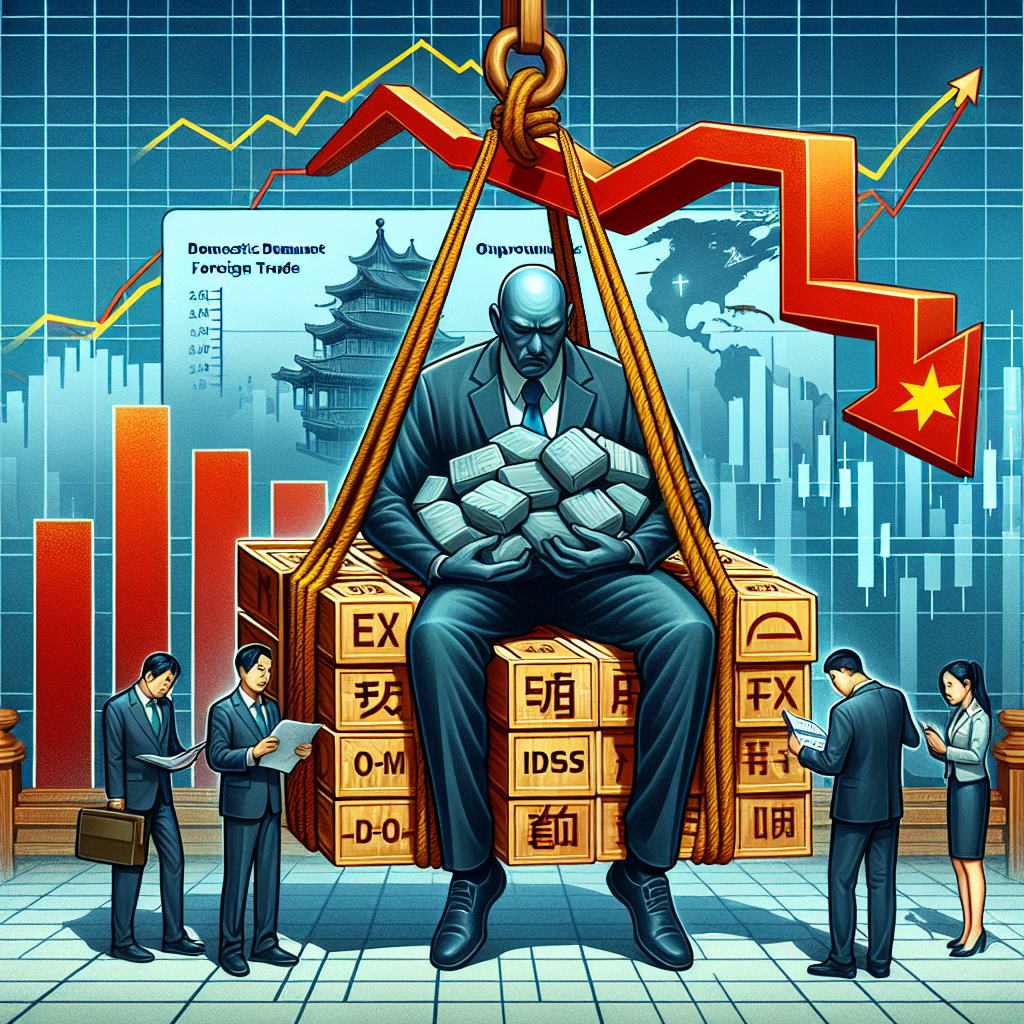China’s economy continued to slow down in the second quarter of this year, with weak domestic demand and uncertainties in foreign trade adding to overall pressure. Despite official data showing decent growth, many analysts question the figures as overly optimistic and warn of significantly rising risks in the second half of the year. Consumers are also cautiously holding onto their wallets.
On Tuesday (July 15th), the National Bureau of Statistics of China announced that the country’s Gross Domestic Product (GDP) for the second quarter grew by 5.2% year-on-year, slightly higher than the expected 5.1%, but a decrease from the 5.4% in the first quarter. Retail sales in June rose by only 4.8% year-on-year, down from 6.4% in May, marking a new low for the year and highlighting the weak consumer recovery.
30-year-old Shenzhen physician Mallory Jiang told Reuters that both she and her husband have experienced pay cuts this year. “We dare not buy a house, and we have started to save money by taking public transportation, eating at the hospital, or cooking at home,” she admitted. “The data may look good, but our lives have not improved.”
Although industrial production in June increased by 6.8% year-on-year, the fastest since March, overall economic momentum remains weak. Huang Zichun, a China economist at Capital Economics, pointed out that in June, China’s Producer Price Index (PPI) fell close to a two-year high, indicating intensified deflationary pressures. “This GDP data may overstate the actual strength, and growth is feared to further slow down in the second half of the year.”
Analysts widely believe that the earlier export surge and subsidy effects are difficult to sustain. Yao Wei, an economist at Societe Generale, said, “The export momentum in the second half of the year will gradually fade, and the escalation of U.S. tariffs and a deteriorating housing market will further impact growth.”
According to a Reuters survey, China’s GDP growth rate for 2025 is expected to be 4.6%, lower than the official target of “around 5%”, and it is projected to drop to 4.2% in 2026. GDP growth estimates for the third and fourth quarters of 2025 are only 4.5% and 4.0%.
Real estate remains a continuing drag on the economy. Real estate investment significantly contracted in the first half of the year, with new residential prices in June seeing the largest drop in eight months. Despite Beijing’s repeated introduction of measures to buoy the market, such as “urban village renovation” and “new real estate development models,” market response has been tepid, with no significant reversal in overall trends.
Investment data also reflects fatigue: fixed-asset investment from January to June increased by only 2.8% year-on-year, further declining from the previous month. Crude steel production in June decreased by 9.2% year-on-year, indicating insufficient confidence in future demand from enterprises.
The focus is now on the upcoming meeting of the Communist Party’s Central Political Bureau at the end of July, where signals on economic policies for the second half of the year are anticipated. However, despite recent expansion of infrastructure projects, subsidy disbursements, and interest rate cuts in May to boost liquidity, the overall impact has been limited. Observers widely believe that Beijing’s policy tools are increasingly constrained, making it difficult to effectively boost confidence and demand.
Wang Dan, the China Region Director of the Singapore-based Eurasia Group, pointed out, “If the fiscal stimulus is not strong enough, the economic growth rate in the third quarter may be further revised downwards. Consumers and enterprises are becoming more conservative, while export-oriented companies are turning to overseas markets for opportunities.”

